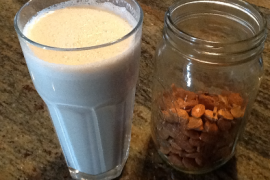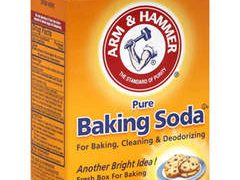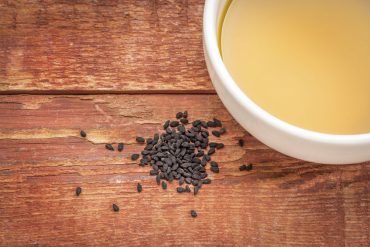The purslane plant is one of those herbs that people typically can’t decide whether to keep or remove from their garden. It’s typically viewed as unwelcome because it pops up beside your more desirable plants. It’s become so widespread in gardens today that the USDA has actually branded it as a noxious weed.1
Purslane weeds can grow in almost any place where there is ground to take up root. It can grow through pavement cracks or small patches of land. It’s characterized by its spoon-like succulent leaves and its reddish stem.
Purslane flower buds are also characterized by their distinct yellow color. These buds usually open at 9 in the morning and close at various times of the day, depending on the temperature. The plant can grow to up to 10 centimeters high.2
But is purslane edible? It surely is. This herb is widely embraced in certain cuisines as a wonderful addition to salads and other recipes. In America, however, it is still seen as an unwelcome plant and is still weeded out.
But remember that if you take out this herb from your garden, you’re also setting aside the numerous health benefits that it can actually offer you. In fact purslane can actually be called a “superfood” because of the vast assortment of vitamins and minerals that can be extracted from this herb.3
Purslane’s Many Health Benefits
Owning up to its title as a “superfood,” purslane has a wide variety of vitamins and minerals belonging to its arsenal. It has antibacterial, antiscorbutic (combats scurvy), depurative (detoxifying and purifying), diuretic (increases amount of water in the body), and febrifuge (reduces fever) properties.4
Here are some of the additional health benefits that you can receive from consuming purslane:
• Its leaves contain high amounts of omega-3 fatty acids. Omega-3 fatty acids are responsible for helping to prevent high cholesterol and high blood pressure.
Omega-3 fats also play a role in lowering the risk for the development of heart disease by combatting inflammation, and also help manage cognitive function and normal growth and development.5
• Contains zinc, phosphorus, manganese, copper and calcium.6 Zinc is responsible for maintaining and improving immune system function. It is also responsible for fighting off free radicals that may cause cancer.
Phosphorus and calcium are responsible for bone and dental health. The latter is also essential for nerve, muscle, and blood function. Meanwhile, you need copper to help ensure the thorough absorption of iron. It is also important for hemoglobin production in your body.
Lastly, manganese acts as an antioxidant and helps in fighting off free radicals. It is also important for repairing damaged tissue, breaking down fats and cholesterol, and producing energy.7
• An excellent source of vitamin A. Purslane packs the highest amount of vitamin A present in any leafy vegetable. Vitamin A is important for the improvement and maintenance of visual health, and is also crucial for bone and cell growth.8
• Low in calories. Purslane contains only 16 calories per 100 grams. This is good news for people who are trying to limit their caloric intake. It is also packed with dietary fiber, which contributes to the feeling of fullness after every meal, limiting your intake of food and aiding in weight loss.9
What Is Purslane Used For?
Purslane can actually be used in different ways to treat different body aches and illnesses. It can work as a topical treatment to alleviate headaches, fevers and inflammation.
The leaves can also be placed under the tongue to alleviate thirst, although I wouldn’t recommend this, as you should always address your thirst by drinking enough water to prevent dehydration.
Purslane juice can also be extracted from the plant and can be used as a remedy for dry cough and shortness of breath. On the other hand, purslane tea can be used to alleviate toothaches.10
Aside from these medicinal purposes, purslane can also be added to recipes for main dishes and salads to add flavor and boost the nutritional content.
How to Grow Purslane
Growing purslane isn’t a complicated task. It can be propagated in two ways: through the spread of purslane seeds or from breaking off stems from the plant itself. Purslane seeds usually develop in small seed pods in spring or early summer. These seed pods usually break off to allow the seeds to be scattered.
These seeds usually take roughly 10 days to germinate when exposed to temperatures between 70 to 90 degrees Fahrenheit. While purslane plants can grow anywhere, people typically prefer growing them indoors. Here is a step-by-step guide on how to successfully grow purslane indoors:11
1. Acquire seeds or stem cuttings. Purslane seeds can usually be acquired from scattered purslane plants, but they can also be bought online. If you choose to gather seeds from wild purslane, make sure that the plants have not been treated pesticides or herbicides.
2. Fill a pot with rich soil. You can also add in some soil from your compost bin as fertilizer. When planting seeds, make sure that you scatter them on top of the soil – do not cover them with the soil.
Purslane seeds need light to germinate and take root. When using stem cuttings, lay the cuttings on the ground. It generally takes a few days before the cuttings take root.
3. Make sure that you water the soil until it’s moist. Avoid watering the soil to the point that it gets too soggy. Purslane seeds need only a limited amount of water to germinate.
4. Keep the pot in a location where it can get enough sunlight. The seeds will take about two weeks to sprout.
A reminder on purslane plant care: It can spread fast and can become invasive if not contained efficiently. It is recommended that you cut a purslane plant before the flowers appear so as not to allow it to spread at an alarming pace.
It also grows annually, which will require you to aquire seeds from your plants to make sure that you don’t run out of sprouts.12
How to Eat Purslane
Purslane can be eaten either raw or cooked. If you’re planning on eating raw purslane, make sure that the plant is pesticide and herbicide free to prevent accidental ingestion of harmful chemicals such as Roundup.
As a precaution, it is recommended to wash the leaves and stems thoroughly before consuming. Typically, people eat the young purslane leaves and stems to avoid the tougher parts of the plant.13
For cooked purslane, there are numerous ways to incorporate this herb in your favorite dishes. You can boil it in water for 10 minutes and drain, or you can add it to other recipes to give the dish an added crunch.
Purslane Recipes You Should Try
Even though most people don’t know that purslane is a nutritious herb, recipes have started to crop up with purslane as the main ingredient. This means that the herb is starting to gain popularity, and people are starting to acknowledge its potential in improving human health. Purslane is commonly added to salads, such as this Purslane and Parsley Salad recipe:14
Purslane and Parsley Salad
Ingredients:
- 3 tablespoons olive oil
- 1 tablespoon fresh lemon juice
- 1 tablespoon finely chopped shallot
- 1/2 pound cherry tomatoes (preferably assorted heirloom varieties), halved or quartered if large
- 6 cups packed tender purslane sprigs and leaves (from a 1-pound bunch)
- 4 cups packed flat-leaf parsley leaves (from 2 large bunches)
Procedure:
1. Whisk together oil, lemon juice, shallot, and 1/4 teaspoon each of salt and pepper in a large bowl.
2. Add tomatoes, purslane, and parsley, gently tossing to coat.
When preparing this recipe, please make sure that the produce that you buy comes from organic sources. This will ensure that you’re not at risk of ingesting harmful chemicals that are most often utilized in conventional farming.
Sources and References
- 1 Vozella, Laura. Purslane: A weed worth eating. Baltimore Sun. December 28, 2016
- 2 Palomo, Eulalia. Gardening: Purslane Seeds. HomeGuides.SFGate.com
- 3 Mason, Sandra. Purslane – Weed It or Eat It?. University of Illinois
- 4 Purslane: Portulaca oleracea. EdibleWildFood.com
- 5, 6, 8 Purslane Nutrition Facts. Nutrition-and-You.com
- 7 Benefits of Minerals. FitnessHealth101.com
- 9 Health Benefits of Purslane. OrganicFacts.com
- 10 Grieve, M. Purslane, Golden. Botanical.com
- 11 Coe, Robin. How to Grow Purslane Indoors. GardenGuides.com
- 12 Rhoades, Heather. Fresh Purslane Herb – What is Purslane and Care of Purslane Plant. February 22, 2016
- 13 Bowman, Barbara. Verdodalagas. GourmetSleuth.com
- 14 Knauer, Ian. Purslane and Parsley Salad. Epicurious.com. August 2008.
About the author:








